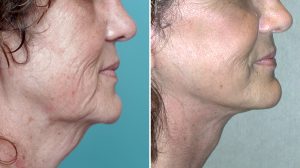There are many aesthetic changes that can be made to one’s face. The list of potential plastic surgery procedures for cosmetic enhancement numbers over one hundred. Such procedures are usually thought of as the specific region that is being changed. (e.g., nose, eyes, brow, chin, neck, etc.) Some think of these procedures by the anatomic tissues which are being manipulated, hard or soft tissues. And others may classify them by anatomic region. (upper, middle third, and lower face)
But there is also another way to think about facial plastic surgery procedures, and that is from an underlying psychologic or motivational perspective. Why is one having the procedures and how does this influence one’s preparation and expectations from the surgery? By this view, cosmetic facial procedures can be classified into structural and anti-aging operations.


The psychological difference between anti-aging and structural facial surgery is significant. One who undergoes a facelift, for example, wants to know many aspects about the procedure (recovery, risks, etc) but is not overly concerned about the outcome. While no one wants to look overdone or unnatural from a facelift (the most common patient concern), the comfort lies in going to a place where one once was. When one is undergoing a rhinoplasty, for example, the concerns about the outcome are much different. One is heading to a place where they have never been and that can cause great uneasiness. Even though one knows that the goal is to look better, not being exactly familiar with what that is can be unsettling. It is for this reason that many structural facial patients will spend a great deal of time analyzing their photos, doing drawings and measurements, and in general doing much more research before the procedure(s).
Structural facial surgery patients require more preoperative time and discussions. It is critically important that a good connection and rapport is developed between plastic surgeon and these surgery patients to avoid a misunderstood outcome. It is also vital that computer imaging is done before surgery to aid this communication process and lower the potential revision rate.
In some cases, most commonly anti-aging surgery, the two types of facial plastic surgery procedures are simultaneously used. But one of them is the dominant approach and the opposite facial procedure is complementary. (e.g., facelift with a chin implant)
Dr. Barry Eppley
Indianapolis, Indiana


